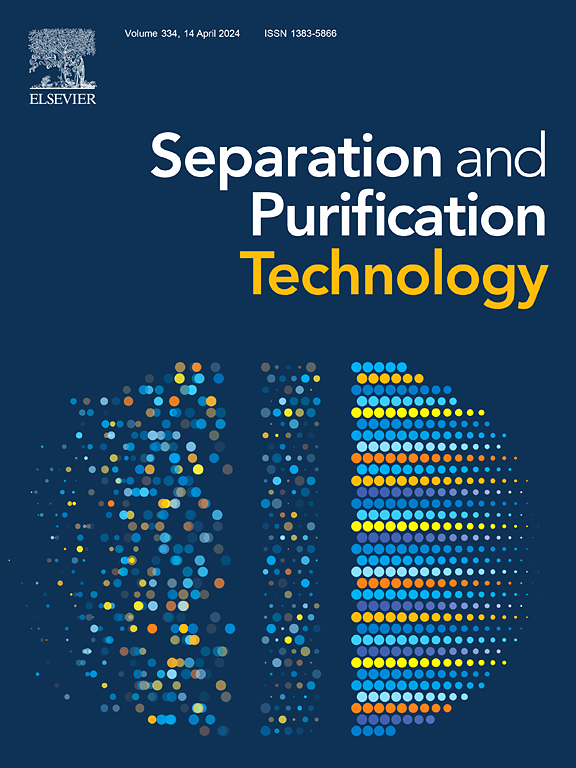Good modeling practice for calibration applied to ion exchange breakthrough prediction
IF 8.1
1区 工程技术
Q1 ENGINEERING, CHEMICAL
引用次数: 0
Abstract
Ion exchange (IX) is a key technology in resource recovery processes for demineralization and fit-for-purpose water production due to its inherent ion-selective recovery properties. A major bottleneck in the optimization of the IX process is the accurate prediction of ion breakthrough times, which has the potential to save on regeneration chemicals by maximizing resin utilization. However, the models used to predict ion breakthrough times are often unreliable due to poor calibration methods and significant uncertainty in parameter estimates. Consequently, we conducted local and global sensitivity analyses to identify the design and operational parameters that contribute most to the prediction of breakthrough curves. The global sensitivity analysis enabled the selection of a limited subset of parameters for calibration, demonstrating that only two parameters, namely the maximum adsorption capacity isotherm parameter and the resin bead particle size, require thorough calibration, resulting in a 76 % improvement in the breakthrough prediction. We also showed that the calibration of additional, less sensitive or correlated parameters results in an insignificant improvement of the predictive power, with a 16 % to 60 % increased uncertainty in the breakthrough time prediction. The model was validated using three independent data sets, which showed a fairly accurate breakthrough time prediction, with a relative error ranging from 1 % to 11 %. Herein, we propose a robust calibration procedure, based on good modeling practice, that encompasses both sensitivity and uncertainty analyses and therefore provides a basis for process optimization. The framework is presented in a manner that allows for its application to analogous process settings.求助全文
约1分钟内获得全文
求助全文
来源期刊

Separation and Purification Technology
工程技术-工程:化工
CiteScore
14.00
自引率
12.80%
发文量
2347
审稿时长
43 days
期刊介绍:
Separation and Purification Technology is a premier journal committed to sharing innovative methods for separation and purification in chemical and environmental engineering, encompassing both homogeneous solutions and heterogeneous mixtures. Our scope includes the separation and/or purification of liquids, vapors, and gases, as well as carbon capture and separation techniques. However, it's important to note that methods solely intended for analytical purposes are not within the scope of the journal. Additionally, disciplines such as soil science, polymer science, and metallurgy fall outside the purview of Separation and Purification Technology. Join us in advancing the field of separation and purification methods for sustainable solutions in chemical and environmental engineering.
 求助内容:
求助内容: 应助结果提醒方式:
应助结果提醒方式:


